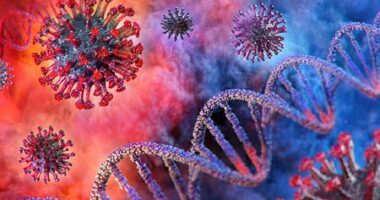3 HGF-based Therapies in the Works With Helixmith’s DART Program
Improved motor functions, survival in ALS animal models have been shown

Helixmith has unveiled its new multi-approach program called DART — Defeating ALS through Regenerative Therapeutics — to develop new therapies for amyotrophic lateral sclerosis (ALS).
Company CEO Sunyoung Kim presented the program in person and virtually at the 2022 Cell & Gene Meeting on the Mesa, Oct. 11–13. A similar presentation will be made at the 2022 BIO Europe, Oct. 24–26, in Leipzig, Germany.
The DART program is focused on developing therapies that utilize a signaling molecule called hepatocyte growth factor (HGF). Its receptor protein, called c-Met, is present on the surface of many cell types that play important roles in ALS, including motor neurons, muscle cells, and certain inflammatory immune cells.
Motor neurons are the specialized nerve cells that control voluntary movement and that are progressively damaged and lost in ALS.
By binding to receptors, HGF can coordinate a wide range of biological activities in different cell types.
Among the effects that make it well suited as an ALS therapy, according to Helixmith, HGF/c-Met signaling can promote nerve cell growth, and nerve cell and muscle regeneration, while reducing inflammation.
HGF treatment “has been demonstrated to improve motor functions and survival in animal models” of ALS, according to the presentation.
The signaling molecule does not last long in the body before being broken down and may have off-target effects, however, which pose obstacles for HGF-based therapies.
With DART, Helixmith is deploying a “kill three birds with one stone” strategy and developing three different HGF-based therapeutic approaches at the same time.
“It takes nearly 10 years to develop one drug candidate and have it tested in a phase 1 clinical trial,” Helixmith noted in a company press release. “If Helixmith was to start working on the second product only after the first candidate fails, this is too slow for ALS patients’ urgent need for treatment. Therefore, Helixmith is testing three products almost simultaneously.”
The different approaches are expected to result in different levels, duration, and biodistribution of HGF activities, with each having “its own strengths and weaknesses in treating ALS,” the researchers wrote.
The first therapy candidate, called Engensis (VM202), is a nonviral gene therapy that uses Helixmith’s proprietary small circular DNA molecule to deliver a copy of the HGF gene to cells in the body, prompting them to make the HGF protein.
Helixmith previously sponsored a Phase 1/2 trial (NCT02039401) and the REViVALS-1A Phase 2a study (NCT04632225) to evaluate the safety and effectiveness of Engensis, which is delivered via injection into arm and leg muscles, in ALS patients.
The therapy was generally well tolerated and some hints of efficacy have been seen, though the small number of patients in these trials limited the ability to draw meaningful conclusions, according to Helixmith.
The company is planning to launch another Phase 1/2 trial next year to test Engensis delivered via injection directly into the diaphragm, the major muscle that controls breathing.
The second candidate therapy in the DART program, called NM301, would also deliver a copy of the HGF gene to the body’s cells. Unlike Engensis, NM301 uses a modified and harmless adeno-associated virus (AAV) to deliver its genetic payload.
This approach showed promise in ALS animal models, improving motor performance, survival rate, and neuromuscular features.
The third therapy, VM507, is an antibody designed to bind to the c-MET receptor, functionally mimicking HGF activity.
“Data from various animal models demonstrated VM507 contained all those expected HGF bioactivities, indicating its therapeutic potential in ALS,” the researchers wrote.
Helixmith expects to begin clinical testing of NM301 and VM507 between 2024 and 2026.







